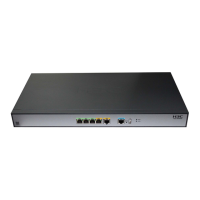9
Configuring WLAN access
The terms AP and fat AP in this document refer to MSR800, MSR 900, MSR900-E, MSR 930, and
MSR 20-1X routers with IEEE 802.11b/g and MSR series routers installed with a SIC WLAN module.
WLAN access overview
A WLAN can provide the following services:
• WLAN client connectivity to conventional 802.3 LANs
• Secured WLAN access with different authentication and encryption methods
• Seamless roaming of WLAN clients in the mobility domain
Terminology
• Client—A handheld computer or laptop with a wireless NIC or a terminal that supports WiFi.
• Access point—An AP bridges frames between wireless and wired networks.
• Fat AP—A fat AP controls and manages all associated wireless stations and bridges frames
between wired and wireless networks.
• Service set identifier—A client scans all networks at first, and then selects a specific SSID to
connect to a specific wireless network.
• Wireless medium—A medium used for transmitting frames between wireless clients. Radio
frequency is used as the wireless medium in the WLAN system.
Client access
A wireless client access process involves three steps: active/passive scanning surrounding wireless
services, authentication, and association, as shown in Figure 1.
Figure 1
Establishing a client access
Scanning
When a wireless client is operating, it usually uses both passive scanning and active scanning to get
information about surrounding wireless networks.
1. Active scanning

